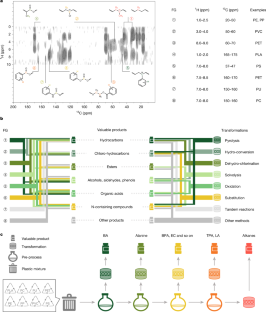2025-06-26 シンガポール国立大学(NUS)
 The new perovskite-organic tandem cell (right) designed by NUS scientists can achieve a power conversion efficiency of 26.4%, outperforming the previous benchmark for similar devices.
The new perovskite-organic tandem cell (right) designed by NUS scientists can achieve a power conversion efficiency of 26.4%, outperforming the previous benchmark for similar devices.
<関連情報>
- https://news.nus.edu.sg/nus-researchers-achieve-record-setting-perovskite-tandem-solar-cell/
- https://www.nature.com/articles/s41586-025-09181-x
ペロブスカイト型有機タンデム太陽電池における効率的な近赤外線集光 Efficient near-infrared harvesting in perovskite–organic tandem solar cells
Zhenrong Jia,Xiao Guo,Xinxing Yin,Ming Sun,Jiawei Qiao,Xinyu Jiang,Xi Wang,Yuduan Wang,Zijing Dong,Zhuojie Shi,Chun-Hsiao Kuan,Jingcong Hu,Qilin Zhou,Xiangkun Jia,Jinxi Chen,Zhouyin Wei,Shunchang Liu,Haoming Liang,Nengxu Li,Ling Kai Lee,Renjun Guo,Stephan V. Roth,Peter Müller-Buschbaum,Xiaotao Hao,… Yi Hou
Nature Published:25 June 2025
DOI:https://doi.org/10.1038/s41586-025-09181-x
Abstract
The broad bandgap tunability of both perovskites and organic semiconductors enables the development of perovskite–organic tandem solar cells with promising theoretical efficiency. However, the certified efficiencies of reported perovskite–organic tandem solar cells remain lower than those of single-junction perovskite solar cells, primarily because of insufficient near-infrared photocurrent in narrow-bandgap organic subcells1,2,3. Here we design and synthesize an asymmetric non-fullerene acceptor (NFA), P2EH-1V, featuring a unilateral conjugated π-bridge to reduce the optical bandgap to 1.27 eV while maintaining ideal exciton dissociation and nanomorphology. Transient absorption spectroscopy confirms efficient hole transfer from P2EH-1V to the donor PM6. Devices based on P2EH-1V exhibit reduced non-radiative voltage losses of 0.20 eV without compromising charge-generation efficiency. We achieve a 17.9% efficiency for the organic bottom cell, with a high short-circuit current density (Jsc) of 28.60 mA cm−2. Furthermore, we minimize interface recombination losses, enabling the perovskite top cell to achieve an impressive open-circuit voltage (Voc) of 1.37 V and a fill factor (FF) of 85.5%. These advancements result in perovskite–organic tandem solar cells achieving a record efficiency of 26.7% (certified at 26.4%) over an aperture area greater than 1 cm2.


 埼玉県防災航空隊(本田航空受託運航)アグスタAW139(回転翼航空機)の重大インシデント[機体の外につり下げている航空機から物件が落下](埼玉県比企郡川島町 ホンダエアポート内、令和6年2月17日発生)](https://tiisys.com/wp-content/uploads/2025/06/スクリーンショット-2025-06-26-174911.png)
